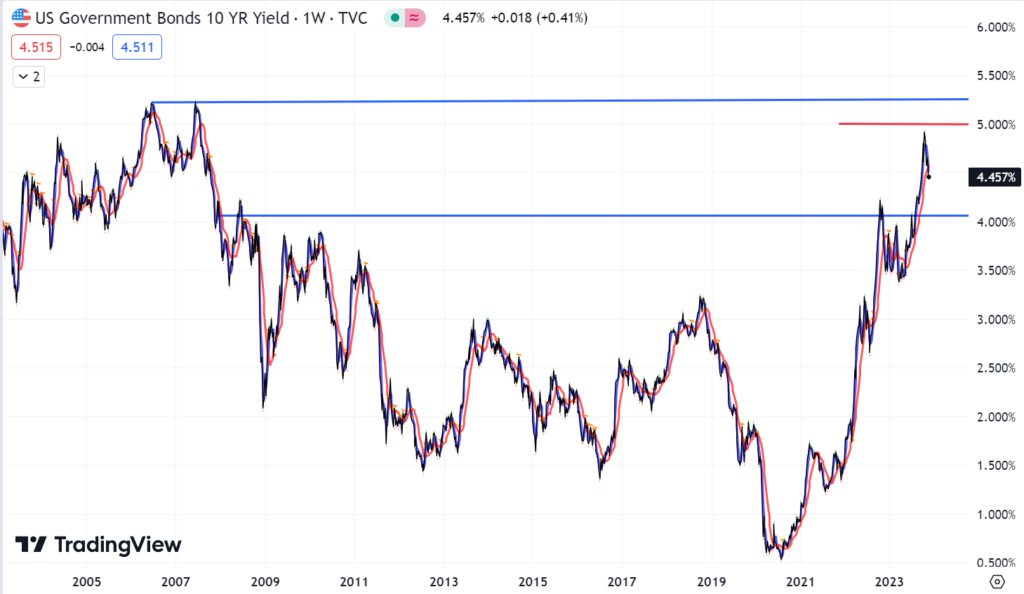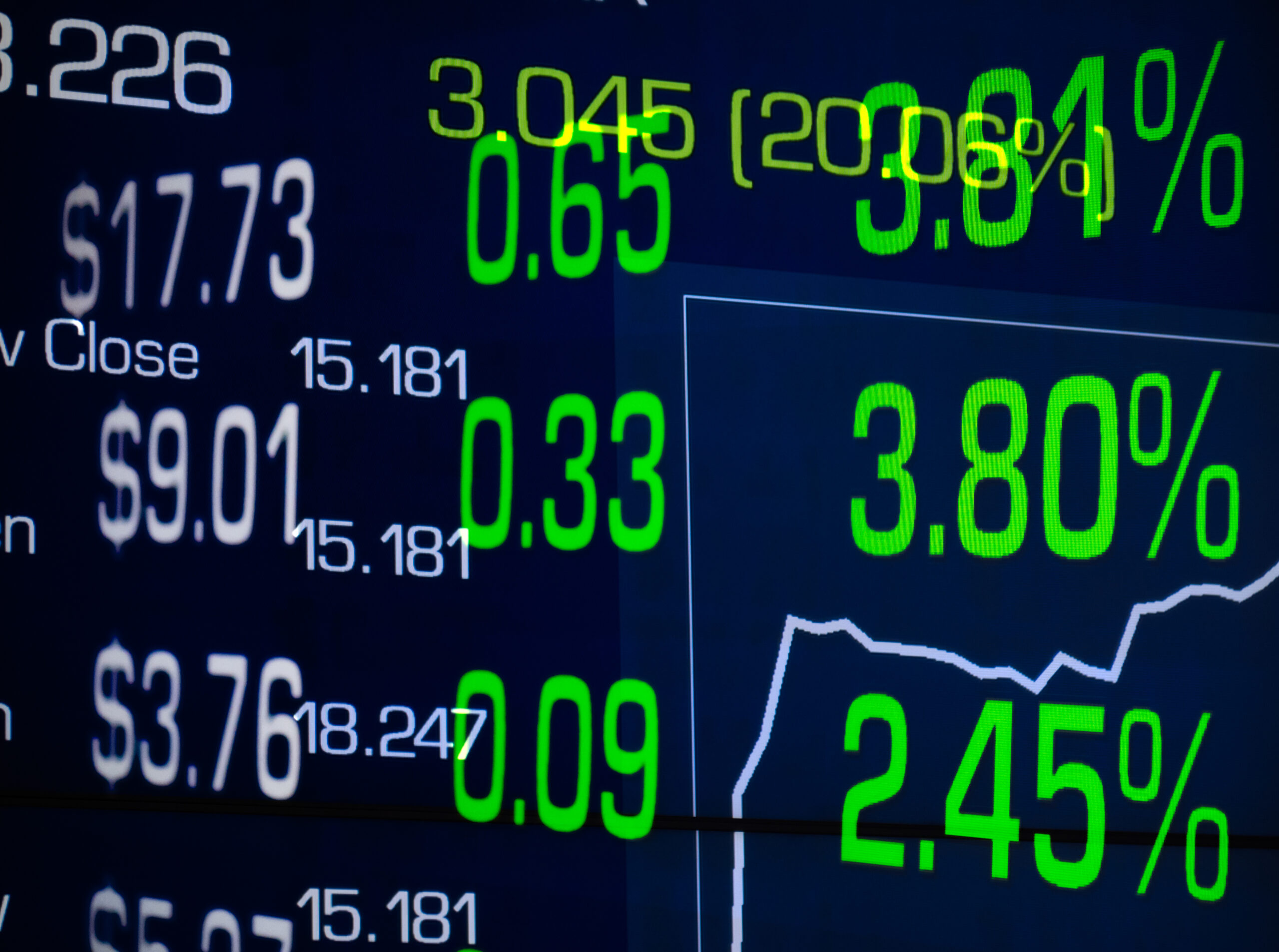Looking back at my posts on October 9th and August 3rd, I thought that if the 10-year Treasury yield could break above that 4% level, it could quickly get to the 5% level, and that’s what appeared to have happened. Remember as bond prices move higher, interest rate-sensitive bond prices decline.
U.S. Treasury 10-Year Yield
As stated in previous posts, the 10-year U.S. Treasury Yield is often utilized as a proxy to the views of bond investors. As you can see in the chart below, the 10-year Treasury yield broke hard above the 4% level, right up to the 5% level as I indicated could quickly happen in my prior posts, then declined quickly to the 4.50% level following data releases that inflation may be cooling.
I know investing can be complex, but sometimes markets just get to levels that many market participants are looking at. In this case, it may have been the 4% and 5% levels of the 10-year Treasury yield.

Source: TradingView.com Retrieved from TradingView.com 11/20/23.
So Now What?
I’ve been consistent believing that inflationary pressures could continue to subside over time. Although it is taking some time for data to show a cooling of inflation to any material levels, it does appear inflationary pressures are easing. If that continues, bond yields could continue to decline and interest rate-sensitive bonds could continue to rally.
If at some point, economic data shows material signs of cooling, the Federal Reserve may start to signal rate cuts. If that is the case, bond yields may come down much quicker causing further rallies in bonds. If the economy slows, but avoids a hard recession, equity markets could then rally as lower yielding bonds no longer offer attractive yields for investors.
Cash yields could come down in a lower rate environment, resulting in investors that had been hiding in cash to move into equity markets that might have been rallying for months, chasing markets higher as FOMO (fear of missing out) kicks in.
Just remember that if this does happen, don’t let your emotions take over. Consider investing for the long-term based on your risk tolerance, not just based on the short-term whims of the markets driving emotional investment decisions.
As long as you understand these potential dynamics that could occur, it may hopefully keep you from chasing markets higher or lower. Markets over the short-term may not necessarily move on fundamentals, but simple price targets, just like the 10-year Treasury yield jumping from 4%-5% in short order, without significant differences in fundamentals.
Stick to your plan and try to ignore the short-term noise.
